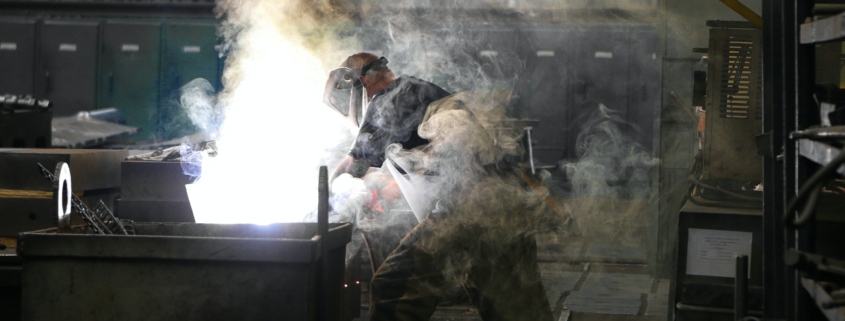Deemed Employment: What Companies Should Know Before Outsourcing Staff
In today’s working world, outsourcing your staffing needs to a temporary employment specialist can be a decisive move for your organisation. A top outsourcing agency will offer a flexible, cost-effective and expertly-managed solution that is clear to understand from the onset and stays in compliance with South Africa’s labour legislation.
The Labour Relations Act 66 of 1995 and its amendments outline the roles and responsibilities of a temporary employment specialist and its client. The relationship between these two parties is unique, and there is one key concept to understand before signing on the dotted line and partnering with an outsourcing agency: deemed employment.
This article dives into the concept of deemed employment, what this means for outsourcing agencies and their clients, and how your company can use this knowledge to make the best of your staff outsourcing solution.
What is ‘deemed employment’?
The Labour Relations Act (LRA) 66 of 1995 is designed to protect all employees and promote economic growth and good labour practices. As a client looking to outsource your staffing needs, it is vital to understand the LRA as it applies to your company to avoid any potential legal issues, save costs, and manage a smooth staff outsourcing process.
According to the LRA, as long as a temporary employee earns below a certain threshold (R211,596.30 per annum), they are considered an employee of the outsourcing agency and not the client. This entails that the outsourcing agency is responsible for drawing up the contract and paying the employee.
However, the amendments made to the LRA in 2015 introduce the concept of “deemed employment,” which states that after three months of working for the client, a temporary employee is deemed a permanent employee of the client and must be treated as such.
The criteria for deemed employment, as outlined in the LRA, account for a situation where:
- The temporary employee is assigned to the client for longer than three months
- They are not a substitute for a temporarily absent employee of the client
- They are not assigned to a particular work category that is agreed to be a temporary service
In this circumstance, the outsourcing agency will no longer be considered the employee’s employer once three months has expired. This process is automatic, and there is no transferring of employment from the outsourcing agency to the client.
The outsourcing agency and the client can either end the contract immediately or renegotiate new terms to move forward in a beneficial way for all parties involved.
This part of labour legislation ensures that temporary services are provided and encourages companies to approach staff outsourcing with the employees’ best interests in mind.
It is important to note that the judgment applies to employees of outsourcing agencies earning below the Basic Condition ogf Employment Act (BCEA) earnings threshold mentioned earlier (R211,596.30 per annum), i.e. lower-paid employees. The judgment does not apply to “substitute” employees or fixed-term contract employees. However, employees of outsourcing agencies who are employed on a fixed-term basis are covered by the judgment.
What does this mean for you?
So, knowing this part of the labour legislation, how can your company develop a mutually beneficial relationship with an outsourcing agency and its employees? How can you ensure that your contract considers every possible outcome and works out for all parties involved?
Clarify your needs beforehand
Identifying your company’s needs beforehand is the first step to ensuring that temporary employment benefits all involved parties. Deemed employment places an unfair burden of uncertainty on employees and outsourcing agencies alike. By clearly defining your organisation’s requirements for hiring temporary staff, you can take the guesswork out of your company’s obligations to both parties.
Dig deeper into the roles that need filling and the requirements of your latest season or project, so you can gain a more comprehensive idea of how long your company will need temporary staff.
For example, you may require a team of staff members to help with a large project that you have just started. You can then hire an outsourcing agency for this job and create a temporary contract based on the estimated time frame your company needs these workers. This way, there is no confusion about whether or not the deemed employment provision will apply to your company.
It also gives the employees more security, knowing that there’s a limit on how long their job will last. It also allows you to rest assured that your staff are indeed hired temporarily and do not become permanent employees.
You also need to ensure that your outsourcing agency is aware of what it needs to include in its contracts with temporary staff, so both parties are clear about their roles from day one. By being transparent about your organisation’s needs and understanding the responsibilities of both parties, you can minimise risk while maximising benefits in this partnership.
Partner with a trusted outsourcing agency
The most important way to ensure that your outsourcing experience is fruitful is to partner with an outsourcing agency you trust. Deemed employment or not, your company needs to have faith in the outsourcing agency it partners with and vice versa.
Partnering with a trusted agency will help you navigate the often murky world of temporary employment and ensure that your outsourcing experience is beneficial for your company and provides peace of mind for all parties involved.
It’s best to be upfront about your temporary staff requirements from the start of your relationship so that both parties can clarify their roles within this arrangement. This transparency will minimise any perceived or actual impropriety and the chances of a misunderstanding on both sides.
With a reputable outsourcing agency on your side, you can rest assured knowing that the contract will be honoured and that they will meet all of your needs laid out early on. They will also take responsibility and ensure that all necessary documentation relating to the temporary staff you hire is in order, so there are no misunderstandings between yourself and your outsourcing partner.
Knowledge is power
Deemed employment is a complex subject that companies need to know when outsourcing staff or engaging temporary workers, but it needn’t be a headache or bring significant risks to your company.
Take the time and put in the effort to identify what you need from an outsourced workforce while also ensuring that all parties involved know their roles and responsibilities within this arrangement. Both your business and any temporary employees can benefit significantly from such a relationship.
If you are looking for expert counselling and trusted advice in the field of labour broking and staff outsourcing, contact MASA today. MASA is a leading temporary and permanent employment specialist providing expert staffing solutions.
Visit our website for an in-depth look at our services, and head over to the blog section for more informative pieces like this one.












